The Card
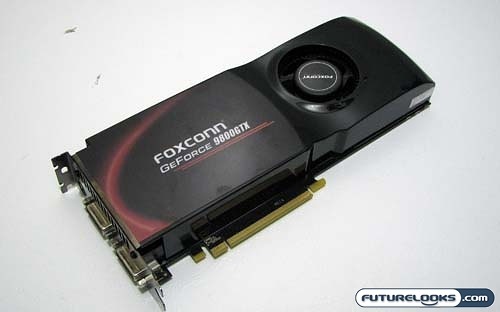
Foxconn has adhered tightly to nVidia’s reference design for the 9800 GTX. The dual slot design uses a cooler that covers the entire face of the card from front to back. nVidia does provide an area for the manufacturer to place their designer decal, or which Foxconn placed something simple and subtle. Trust me I’ve seen some outrageous designs on other cards sporting this bit of customizability.
As for the actual size of the card, at 229 mm the 9800 GTX is a full 38 mm shorter than the previous 8800 GTX card. This may have many system builders breathing easy, as the drop in length may make these cards much easier to accommodate in certain cases.
A Closer Look
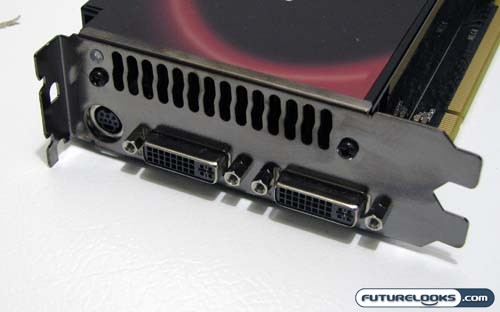
Foxconn’s choice of ports would be considered standard faire amongst most video cards these days. On the front of the card we have two DVI ports and an HD port that connects to a dongle sporting a composite, S-Video, and Component video connection.
Above that is of course the fan exhaust, and to the left is a small LED. This is the one piece of extra kit on the back of this card, and is meant to amongst other things illuminate the card. That way you can find the ports in the dark, should that be a problem for you.
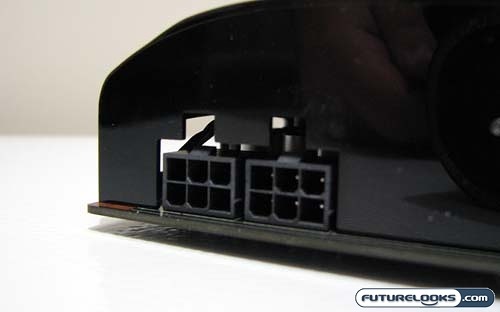
The back of the card has two 6-pin PCI express power connectors facing the leading edge. This allows for easy plug-in and removal without having to remove the video card. Now should your power supply not have such connectors, Foxconn has included adapters to convert standard Molex connectors to the requisite PCI express connections. Be aware that use of these adapters will consume four Molex connectors.
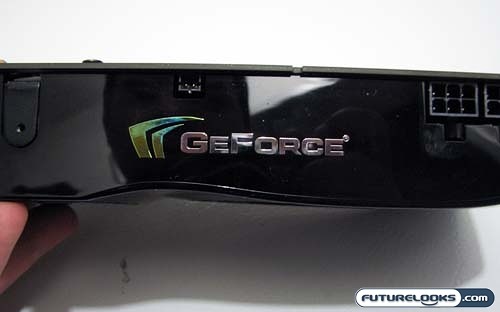
Along the leading edge of the 9800 GTX card there is a 2-pin SPDIF connector. Other than the fact that it is an SPDIF connector, Foxconn (as well as other manufacturers) have little to no information as to this port’s exact function. At least the GeForce logo is all shiny and neat looking.
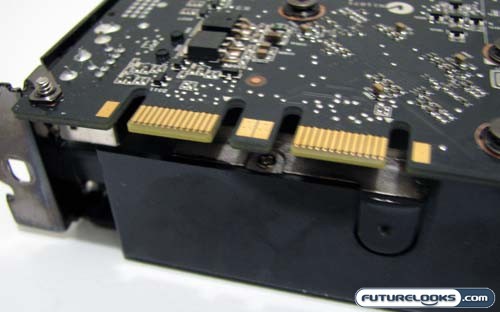
Now an SLI connector is an obvious addition to any modern nVidia video card. Foxconn’s rendition of the 9800 GTX comes two SLI connectors, which are required to support triple SLI. No SLI bridge was included, which means you may need to rely on your motherboard vendor to provide you with one.
Real-Time Price and Stock Check – Shop Like a PRO!
